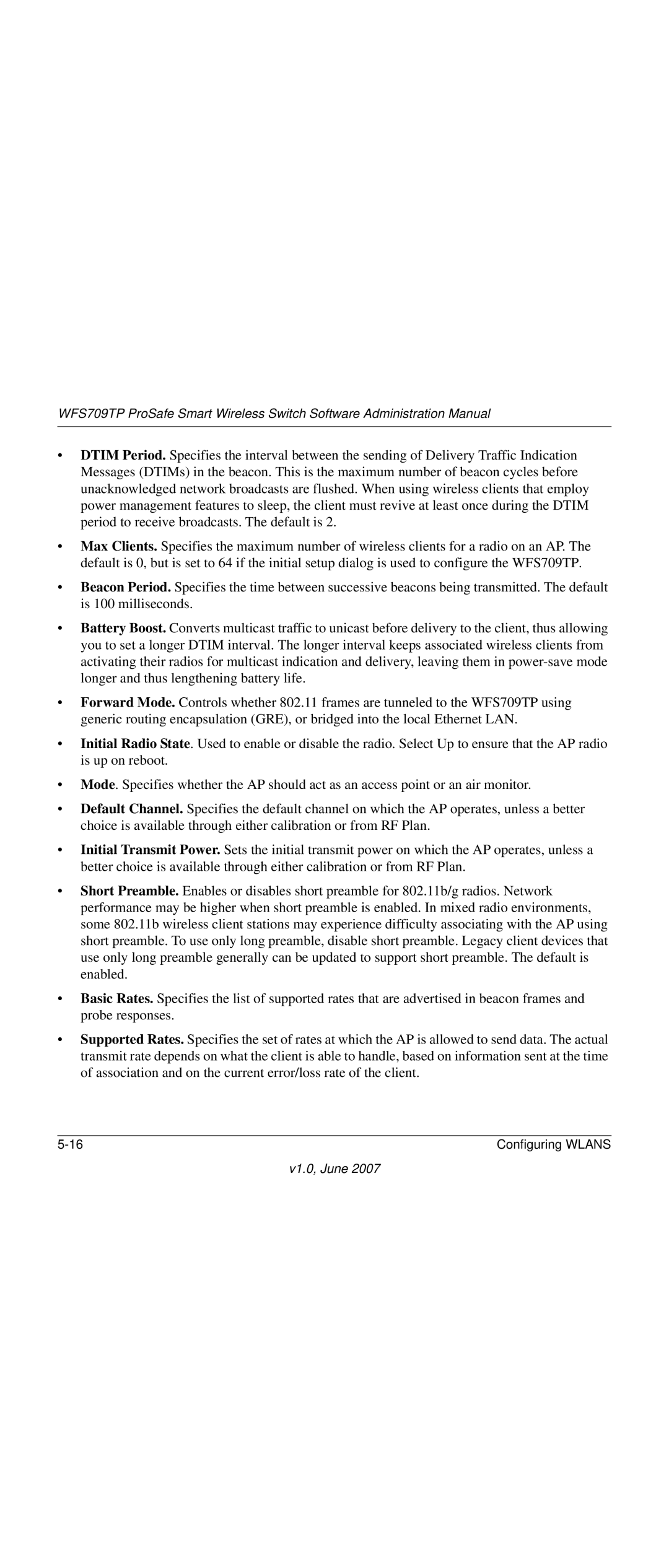WFS709TP ProSafe Smart Wireless Switch Software Administration Manual
•DTIM Period. Specifies the interval between the sending of Delivery Traffic Indication Messages (DTIMs) in the beacon. This is the maximum number of beacon cycles before unacknowledged network broadcasts are flushed. When using wireless clients that employ power management features to sleep, the client must revive at least once during the DTIM period to receive broadcasts. The default is 2.
•Max Clients. Specifies the maximum number of wireless clients for a radio on an AP. The default is 0, but is set to 64 if the initial setup dialog is used to configure the WFS709TP.
•Beacon Period. Specifies the time between successive beacons being transmitted. The default is 100 milliseconds.
•Battery Boost. Converts multicast traffic to unicast before delivery to the client, thus allowing you to set a longer DTIM interval. The longer interval keeps associated wireless clients from activating their radios for multicast indication and delivery, leaving them in
•Forward Mode. Controls whether 802.11 frames are tunneled to the WFS709TP using generic routing encapsulation (GRE), or bridged into the local Ethernet LAN.
•Initial Radio State. Used to enable or disable the radio. Select Up to ensure that the AP radio is up on reboot.
•Mode. Specifies whether the AP should act as an access point or an air monitor.
•Default Channel. Specifies the default channel on which the AP operates, unless a better choice is available through either calibration or from RF Plan.
•Initial Transmit Power. Sets the initial transmit power on which the AP operates, unless a better choice is available through either calibration or from RF Plan.
•Short Preamble. Enables or disables short preamble for 802.11b/g radios. Network performance may be higher when short preamble is enabled. In mixed radio environments, some 802.11b wireless client stations may experience difficulty associating with the AP using short preamble. To use only long preamble, disable short preamble. Legacy client devices that use only long preamble generally can be updated to support short preamble. The default is enabled.
•Basic Rates. Specifies the list of supported rates that are advertised in beacon frames and probe responses.
•Supported Rates. Specifies the set of rates at which the AP is allowed to send data. The actual transmit rate depends on what the client is able to handle, based on information sent at the time of association and on the current error/loss rate of the client.
Configuring WLANS |
